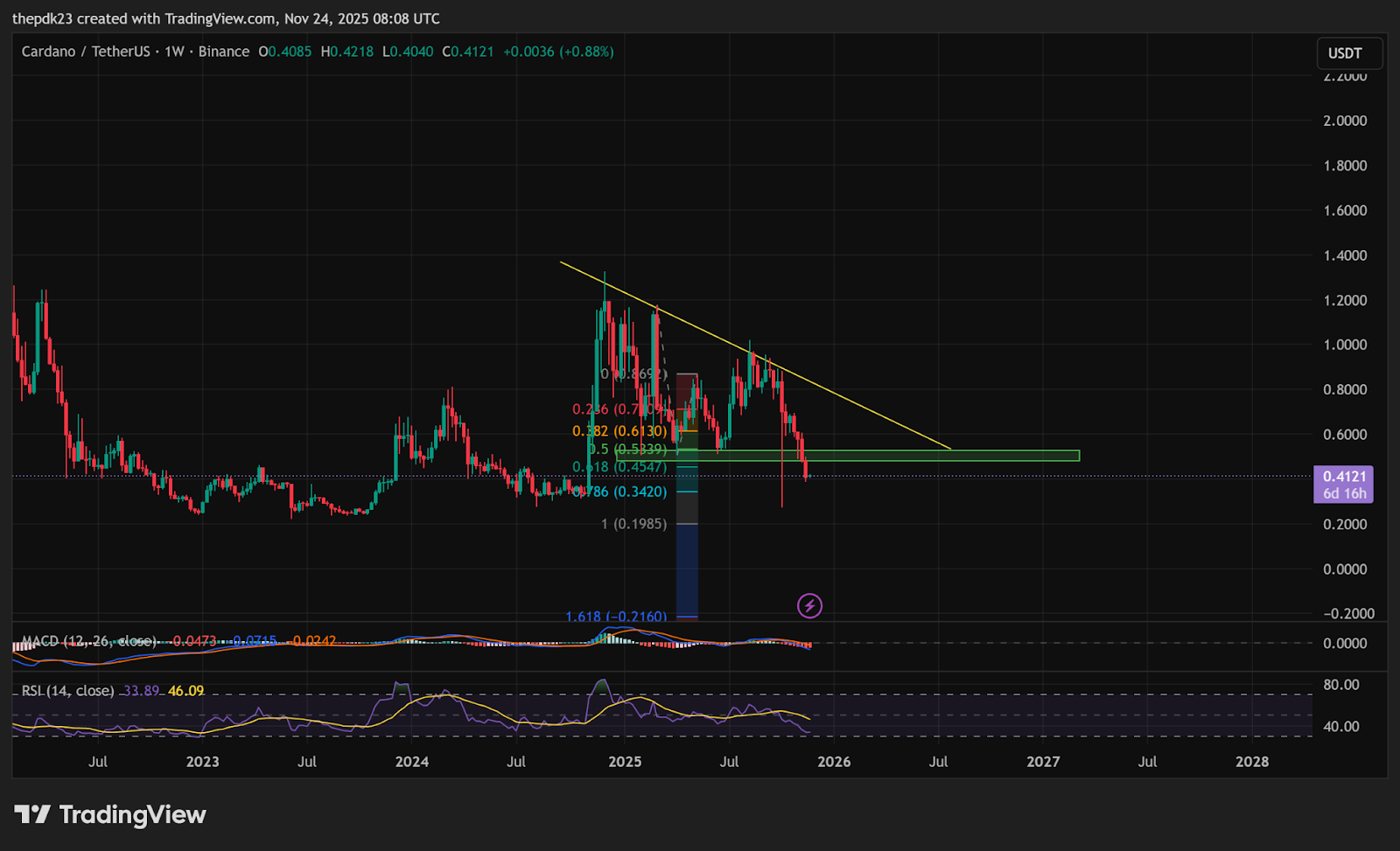- Cardano experienced a rare chain split caused by a malformed delegation transaction.
- The network recovered quickly through coordinated emergency patches.
- ADA trades at $0.4145, down more than 16% in the past week alone.
Cardano’s ADA crashed more than 16% in the past week as a crafted malformed transaction triggered the blockchain’s first major chain split in nearly a decade. While confusion, fear, and speculation spread across investors, founder Charles Hoskinson stepped in to counter the wave of misinformation and detailed the truth.
Posting a fact sheet on X, Hoskinson summarized myths and realities about the November 21 incident while asking the supporters to share the sheet “when the FUD comes rolling in.”
A Chain Split Years in the Making
The split began at approximately 08:00 UTC on November 21, when a malformed delegation transaction exploited a deserialization bug dating back to 2022. The error caused newer node versions to accept the faulty input while older nodes rejected it, splitting the chain into two incompatible ledger states.
Intersect, the Cardano ecosystem organization that documented the incident, said that the network never went down. Blocks continued to be produced on both chains, though exchanges paused operations as they awaited consensus dominance. Coinbase experienced the longest halt, suspending ADA deposits and withdrawals for nearly 14 hours.
Developers across IOG, the Cardano Foundation, EMURGO, and Intersect mobilized quickly. Emergency patches were deployed within three hours, and by November 22 the network had naturally reconverged through standard Ouroboros consensus.
Related: Cardano Experiences Temporary Network Partition After Bug Triggers Mainnet Fork
A Developer Confesses
An X user going by “Homer J” claimed responsibility for triggering the chain split. They described their actions as a careless attempt to reproduce a testnet anomaly, admitting they relied on incorrect AI-generated instructions before executing the damaging transaction.
Hoskinson rejected the framing of an accident, describing the incident as “absolutely personal” and asserting that federal authorities (FBI) were already involved. He alleged that the developer’s actions were premeditated.
The involvement of the FBI pushed Roman, an IOG Plutus developer known online as “effectfully,” to resign publicly. They said that the involvement of federal investigators raised concerns that ordinary development mistakes could now carry legal ramifications.
ADA Price Analysis: Delayed Comeback or Reversal?
Cardano’s ADA trades near the $0.41 region, as per CoinMarketCap during press time. The weekly chart shows ADA continuing its long-term downtrend, defined by a persistent descending resistance line stretching back more than a year.
Meanwhile, the RSI remains in bearish territory, hovering near the mid-30s, while the MACD shows weakness without a clear bullish crossover. For ADA to break its structure, it needs a weekly close above the descending trendline, which currently sits near the $0.60 region.

If ADA rebounds strongly from the demand zone and breaks above $0.60, potential upside targets include $0.70 (0.236 Fib), $0.85, and $1. On the other hand, failure to hold the $0.34–$0.40 demand region could result in a drop to $0.32 and $0.20 (1.0 Fib).
Related: Cardano Price Prediction: Hoskinson Says ‘Attack Failed’ As ADA Breaks Key Support Zone
Disclaimer: The information presented in this article is for informational and educational purposes only. The article does not constitute financial advice or advice of any kind. Coin Edition is not responsible for any losses incurred as a result of the utilization of content, products, or services mentioned. Readers are advised to exercise caution before taking any action related to the company.







